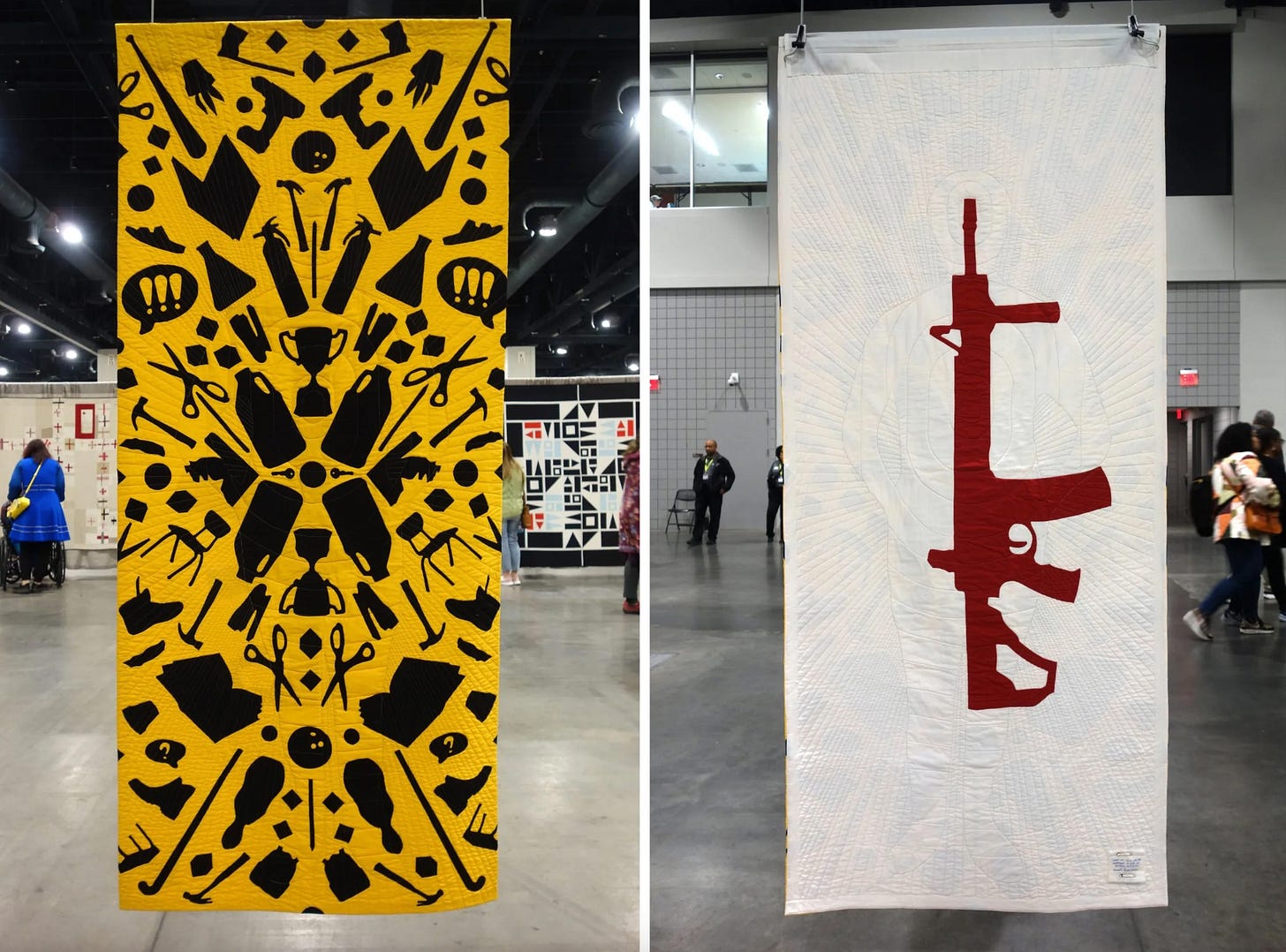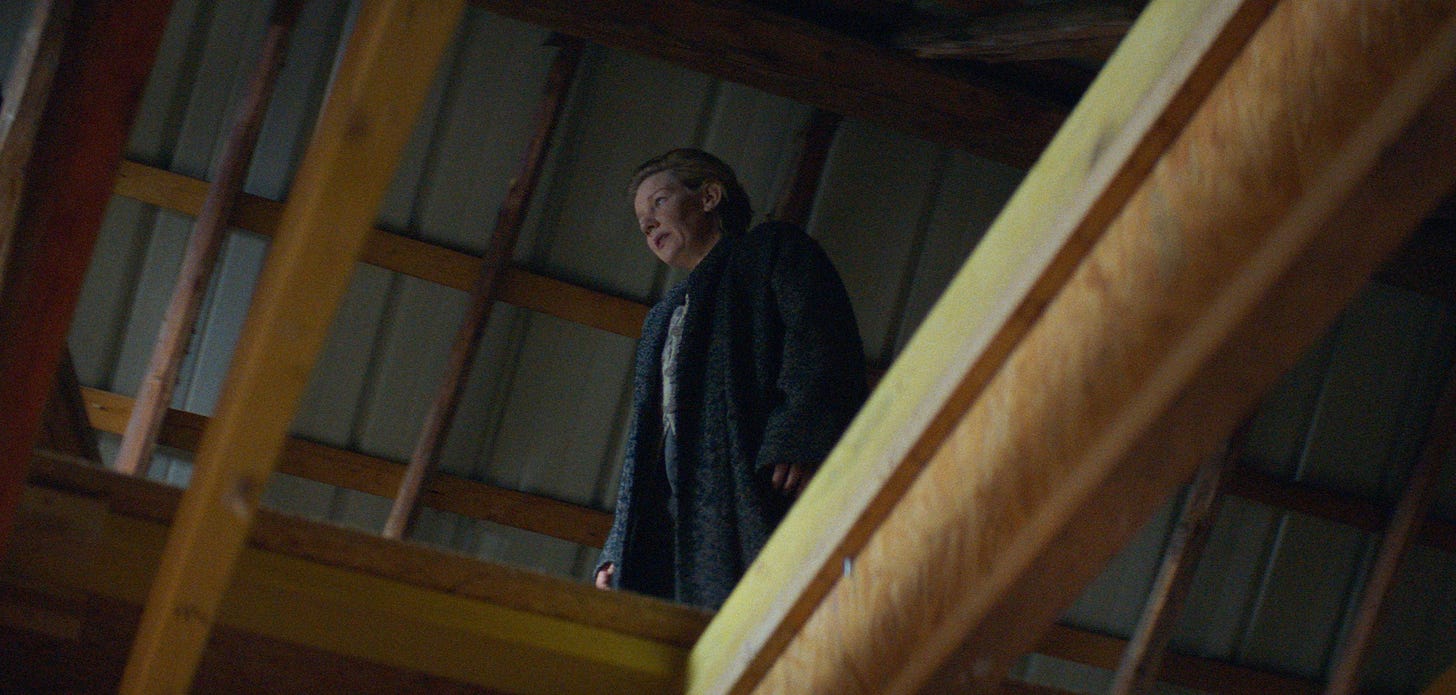Hello friends,
Where do I even begin? I’ve missed you all, for starters. For any recent subscribers to this newsletter (howdy!), I’ve been on a little unofficial hiatus since February. This wasn’t planned, but rather the consequence of trying to finish grad school and my thesis writing and research while also juggling freelance work and my day job with my sanity in tact. I’m proud of what I’ve accomplished, but I’m even more glad to be reading and watching and listening and adventuring for fun again, and I’m excited to share what’s kept me curious and entertained over these past few months.
Before we get into my usual list, a little housekeeping is in order for both my repeat and my new readers. Each month, you’ll get my curated “reliquaries” (often themed, although I like to use these ‘micro’ ones for months when everything’s a random, disorganized jumble). On top of these, I drop periodic additional longform content like essays, book and exhibition reviews, seasonal playlists, and behind-the-scenes looks at creative projects I’ve been working on. All subscribers get previews of those, while paid subscribers get access to the full posts and my entire archive. I have some fun new essays series and ideas in the works, so expect those to start dropping in June.
From the whirlwind of post-grad and start-of-summer mayhem, I want to give you a warm welcome (or, rather, a welcome back!) to
. Whether you’re scrolling through on your computer or trying to catch up on your backlog of emails on your morning commute, I’m glad we’re embarking on this next chapter together.TOUCH


If you’re based in New York City, I can’t recommend participating in a workshop from Field Meridians’ Nature School enough. As an artist collective, Field Meridians has curated a compelling, ongoing schedule of programming dedicated to intersections of art, food, social justice, and ecology. These events—which range from walks, talks, hands-on making, etc.—take place in local community gardens, parks, and green spaces. They are community-oriented in the truest sense of the term, financially accessible, open to participants of all ages, backgrounds, and abilities, and they often draw creative and insightful connections to issues and histories in the neighborhoods they’re hosted in. I recently did two programs on mushrooms. The first, facilitated by Let’s Become Fungal! author Yasmine Ostendorf, explored what it means to build multi-sensory networks of solidarity and knowledge-sharing through lessons mycelium can teach us. Then, I participated in a ‘mycotecture’ workshop led by educator and designer Mae-ling Lokko where we built our own Lobi pot-inspired vessels out of mycelium and hemp before taking them home to grow into a new kind of building material. I had such a great time learning and I can’t wait for my next one.
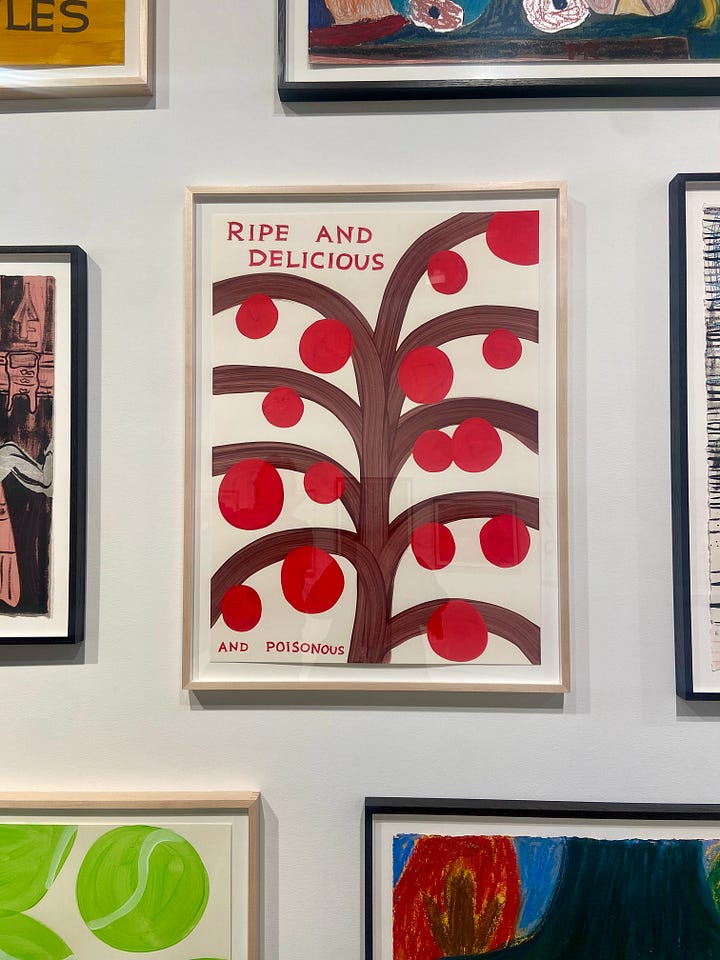
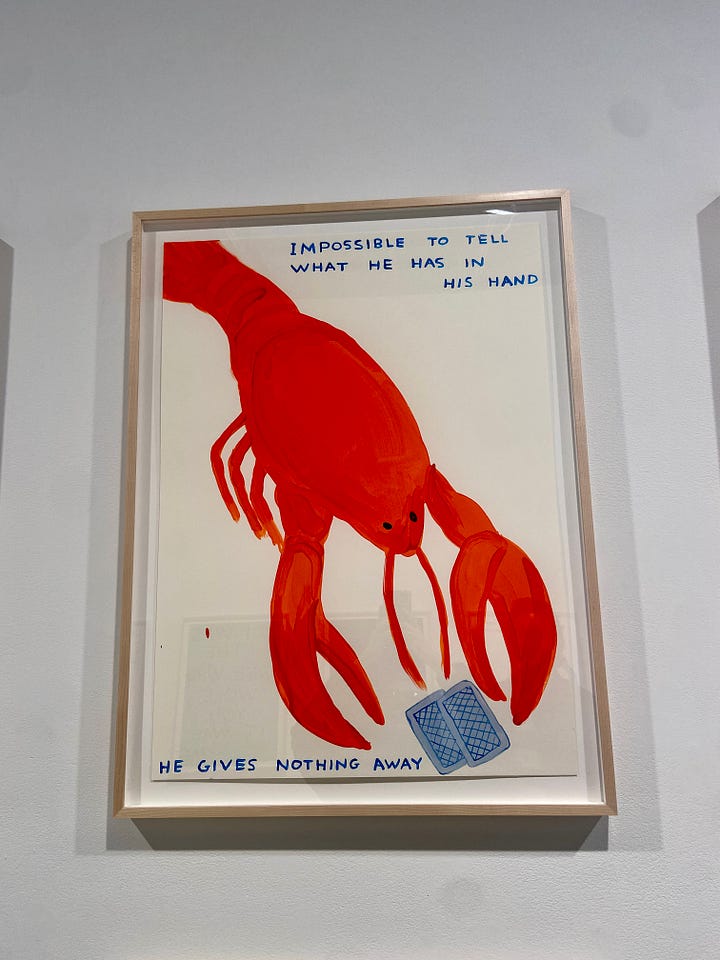
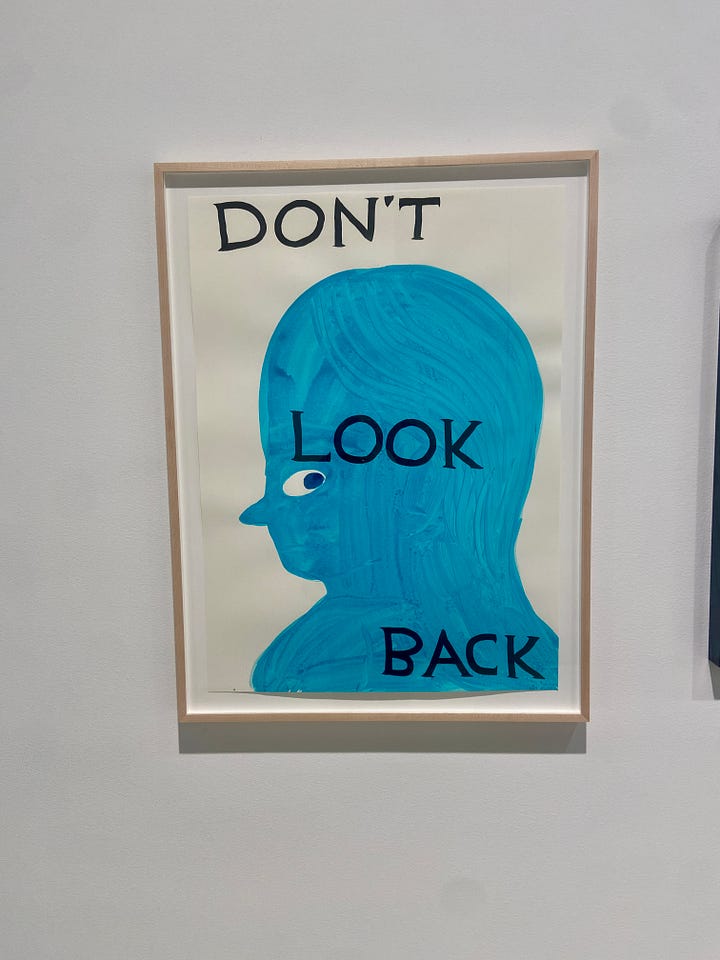
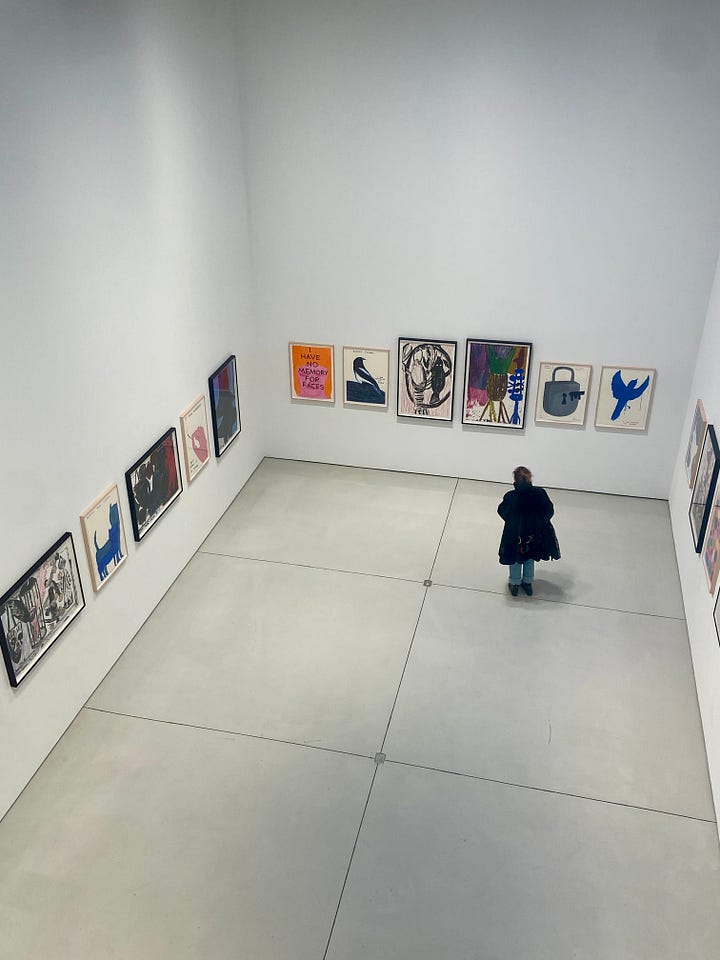
Back in February, my partner and I slipped through the nondescript door of Anton Kern Gallery in Midtown and were immediately delighted to find David Shrigley’s playful illustrations lining the wall. His colorful work has this silly, playful whimsy to it, and always manages to make me laugh. The photos above feature some of my personal favorites, but all were delightful in their own way.
If I could pick a single perfume perfect for rotting in bed, it would have to be Parle Moi’s Orris Tattoo. It’s buttery soft on the skin, a delicate composition of powdery florals that encourages staying in for a night or lounging around on lazy days. This smells heavenly, especially when I have nothing to do and nowhere to be.
LOOK
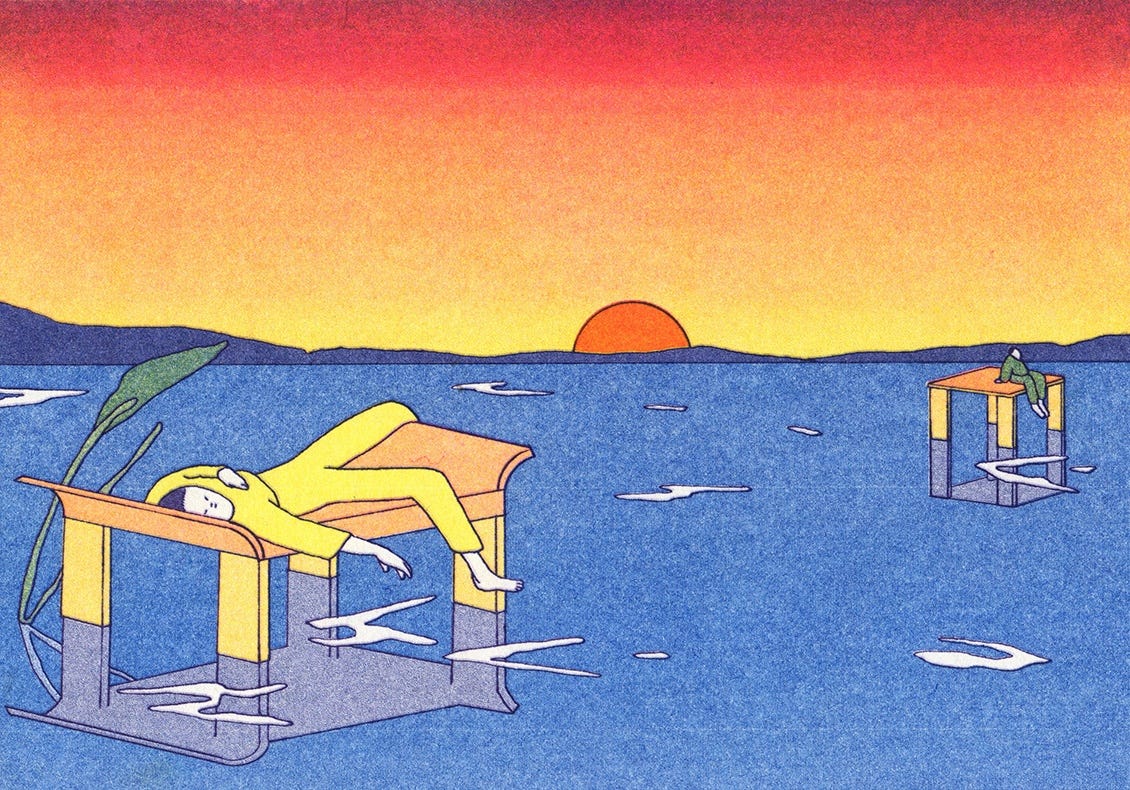
Spanish illustrator María Medem quickly became one of my favorites when I saw the graphic design she did for a 2021 Brazilian edition of Dune. Her breath-taking style places simplistic figures into vibrant chromatic landscapes and atmospheres, imbuing the narratives within her images with a surreal poignancy. I now even have one of her illustrations hanging on my wall now, a reminder to get lost in life’s dreaminess.
Back in February at QuiltCon’s 2024 event, quilter and teacher Ginny Robinson took home the Best in Show award for her piece, What We Will Use As Weapons: A List of School Supplies. When I first saw a fellow textile art enthusiast post this online, it took my breath away. Created on both sides, the work confronts the painful reality of school shootings and how teachers and students have been sacrificed through political inaction. The items Robinson chose were based on conversations with fellow teachers on what they’d use to defend their classrooms (something I also heard discussed growing up with active shooter drills). Robinson notes in her description of the quilt: “Our children deserve better than the nightmare we tolerate.”
As the genocide in Gaza continues, I’m thinking about the work of Gaza-born artist May Murad. Murad incorporates digital iconography into her portraits, reflecting on her experience now living in exile in France while still trying to stay connected to her homelands in the virtual age. As we all become witnesses to the horrors and crises across Palestine through what we see on our phones and social media, Murad’s paintings capture this sense of grief, dislocation, erasure, and alienation.
LISTEN
I've really been enjoying the music stylings of Actress lately. Like many, I got his track "Falling Rizlas" stuck in my head after it became the prelude song Beyoncé played for waiting fans on her Renaissance Tour. But my personal favorite, what I kept turning to when I needed some musical motivation, was his BBC Radio 1 Essential Mix. This mix catapults you into deep, infectious grooves, a rich homage to the old school pioneers of house and techno. After an injury ended his football career, Actress quickly became a powerful force in experimental electronic music. Very few others are at his caliber and this mix is a great showcase of that skillful artistry.
One album I’ve had to repeat this past spring is Dwelling by JEWELSSEA. This album sounds like a fairytale unravelling in a video game. Twinkling synths are punctuated by dubby jungle breakdowns. “Standby” and “Destination Unknown” are my personal standouts, each dazzling electronic odysseys in their own right.
LICK
I know I’m so late to the Anatomy of a Fall obsession, but, my god, I’m still thinking about this movie weeks after watching it. The plot is simple: A family lives in the remote mountains of France. His son finds him dead, having apparently fallen through an open window, and his wife is immediately suspected of his murder. What follows is a blistering unraveling of a marriage and an unexpectedly intimate reflection on the fallibility of memory, of how we remember and are remembered.
When someone asks me for a TV recommendation, I always say, with zero hesitation, to watch Fargo. It’s such an underrated anthology show, delivering season after season of darkly funny and suspenseful stories of crime and conspiracy. Their newest season—with a powerhouse cast of Juno Temple, Jon Hamm, Joe Keery, Lamorne Morris, and Jennifer Jason Leigh—not only made nods to the 1996 Coen brothers original, but also used its sharp satire to grapple with today’s issues of alt-right extremism, violent Christian nationalism, patriarchy, debt, and domestic violence. Nothing compares.
Like many, I completely devoured Jenny Nicholson’s review of Disney’s infamous (and now defunct) Star Wars hotel. I’m not a big Star Wars fan, I haven’t been to the Disney parks in at least decade, but Nicholson was such a compelling narrator that I sat through all 4 hours of her video, completely engrossed in her disastrous saga. Nicholson sets out to see if a $6,000 luxurious, poorly marketed immersive gaming hotel experience is worth the hefty price tag and ends up delivering a thoughtful indictment of Disney’s corporate greed and how it exploits workers and visitors alike. As someone who grew up as a Florida kid and witnessed the gradual pricing out of theme parks, I found Nicholson’s frustrations painfully relatable. Nicholson’s brutally honest assessment will have you reflecting on the pleasures we’ve lost as late-stage capitalism continues to prioritize predatory profits by cutting corners, cheapening, and paywalling experiences, alienating us from what once felt magical.
CLICK
Reading Maya Man's lovely eulogy for Google's long-gone "I'm Feeling Lucky" feature made me so nostalgic for the hours I spent stumbling through the randomness of early Internet search in my family’s computer room. A thoughtful, poetic meditation on chance, control, and user agency, Man takes us through I'm Feeling Lucky's digital life, death, and legacy, and invites us to to keep this spirit of playful luck even as interfaces and algorithmic ranking seek to limit our online experiences. I can't stop thinking about Man's framing of this shift: "Over the course of I’m Feeling Lucky’s short life, she witnessed the internet’s evolution from open world terrain into a set of walled gardens." Although I'm Feeling Lucky is now gone, Man's exploration lets us imagine new digital possibility, unruly virtual weeds beginning to grow through the cracks in the Internet's walls.
Being a writer means becoming very comfortable with rejections of all kinds (I say this as someone with two literary rejections already under my belt for 2024 and more to come). Melina Moe's study of the rejection letters that Toni Morrison wrote as an editor at Random House shows how this common writer's struggle is an invaluable art form of its own. Reading about her generosity in assessing manuscripts by the quality of their craft, and guiding authors on where they can strengthen their work in later revisions brought me so much joy, especially as someone who has also been on that other side as an editor. "What Morrison repeatedly stressed, trusting her exceptional acuity as both a reader and writer, is that writing is a skill of its own," Moe writes, "one that doesn’t automatically follow from intellectual brilliance, nor from simply being an interesting or important person." I definitely hope to carry Morrison's spirited, poetic approach to rejection in my own creative practice.
In an essay “Bent Lace” (an excerpt from their book Sex with a Brain Injury: On Concussion and Recovery), Annie Liontas reflects on Ursula von Rydingsvard’s sculptural corpus and its entanglements with their own body’s journey with illness, recovery, perception, and time. Von Rydingsvard is also one of my favorite artists, and I felt like this meditation, entangled with Liontas’s biography, brought such a powerful new perspective on Ursula’s practice. I found myself getting transported in Liontas’s description of her studio, the transfiguration of textures and layers of people and wood and bronze and lived experience that bring von Rydingsvard’s marvelous creations into being. Here I end with one of Liontas’s contemplations: “What is permanent? What is lasting? How can you feel yourself part of something eternal even when you walk around trapped in a body of immaterial materials?”





